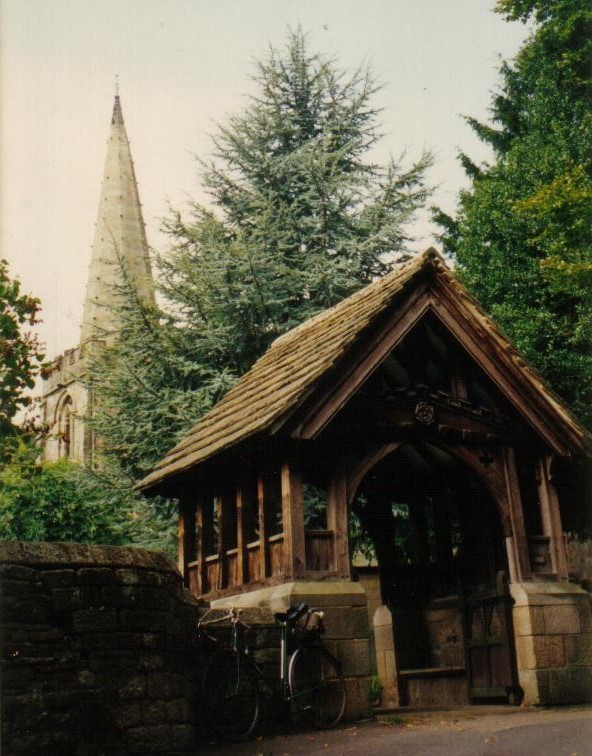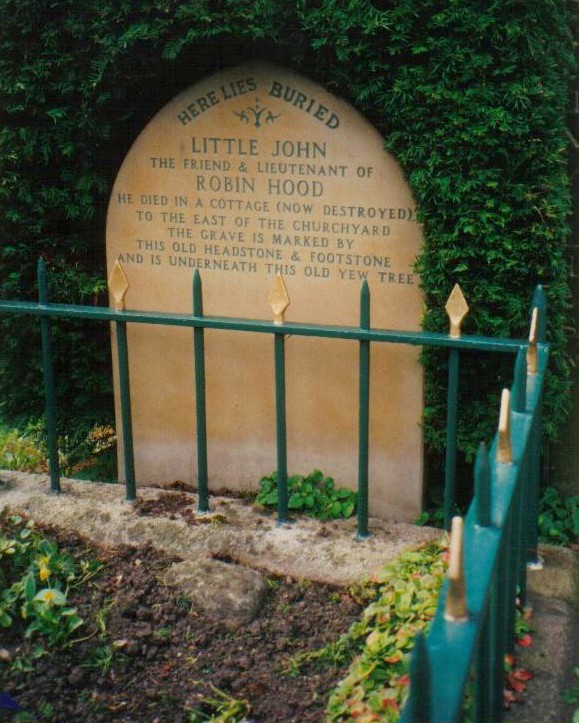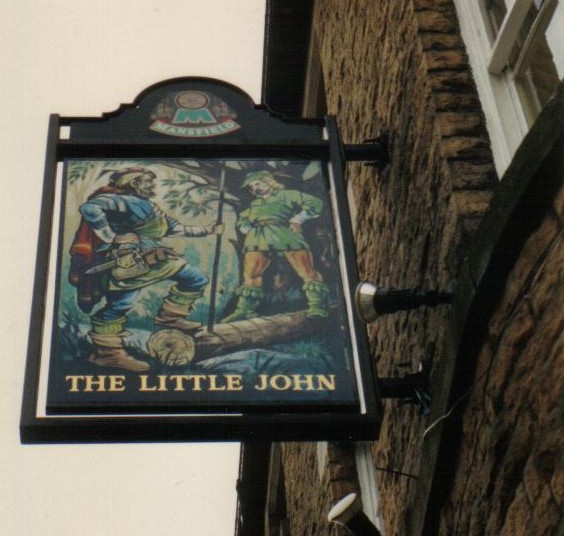by Steenie Harvey
Every English school-kid knows Nottinghamshire’s Sherwood Forest was home to Robin Hood and his band of outlaws. Yet despite what the movies say, the outlaws were probably all men. Maid Marian was actually invented by the Victorians.

Some scholars dispute Robin Hood’s existence, saying he sprang from memories of the Green Man, a forest god from England’s pre-Christian past. Whatever the truth, every folk-tale agrees how Robin died. He was bled to death by his aunt, the Abbess of Kirklees Priory in Yorkshire. With his last breath, he blew a hunting horn, calling Little John to his aid. But the faithful lieutenant — a giant of a man — arrived too late.
If Robin existed, nobody knows his burial place, as Kirklees Priory was destroyed in the Reformation. However, visit Hathersage village high on the moors above Derbyshire’s Hope Valley and you’ll be able to pay your respects to Little John.
A hamlet of granite stone cottages where tiny gardens flower with old-fashioned hollyhocks and briar roses, Hathersage is dominated by its church: St. Michael & All Angels. Locals insist the remains of Robin Hood’s most-trusted sidekick are buried in its churchyard. To enter the churchyard, you pass through a rare lych-gate. Lych-gates are covered structures at churchyard entrances and once served as resting places for funeral biers. The name derives from an old Saxon word for corpse — “lych.”
If the stories are correct, Little John met a more dignified end than Robin. He died of old age in 
When Jenny was a girl, she told folklorists that the grave was opened and a 32-inch thigh bone discovered. This indicates a man around seven feet tall. Other historic records state that up until the 17th century, Little John’s cap and long-bow were kept inside Hathersage church.

To buy this article for use in another publication click here

